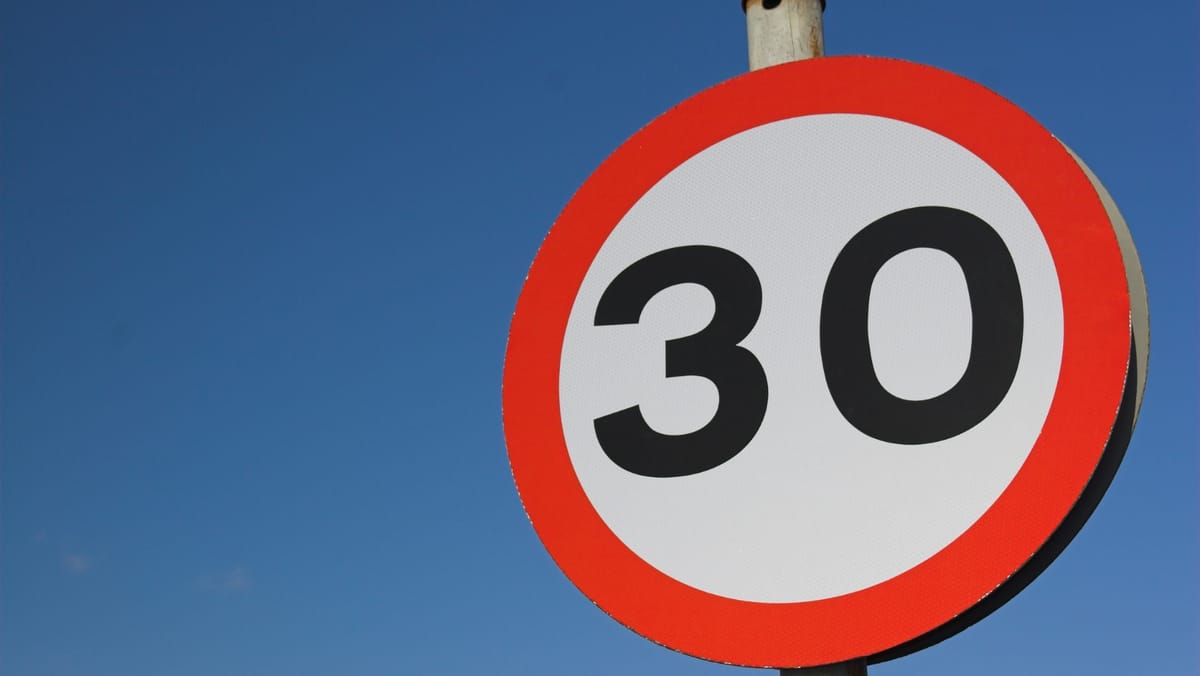Speed Limit Reduction on Rural Roads Comes into Effect Today
Speed limits on rural local roads reduce from 80 km/h to 60 km/h today. Gardaí confirm enforcement begins immediately.

From today, Friday, 7th February, the speed limit on rural local roads in Ireland is officially reduced from 80 km/h to 60 km/h. This change is part of the Government’s Road Safety Strategy and is aimed at reducing road fatalities and ensuring the safety of all road users.
Rural local roads, which primarily serve local traffic and connect rural communities, are designated with an ‘L’ followed by a number or may not have a number at all. Under the new regulations, the ‘rural speed limit sign’ will now indicate a maximum speed of 60 km/h on these roads.
Government and Gardaí Back Speed Limit Reduction
Welcoming the change, Minister for Transport Darragh O’Brien stated:
“Today’s speed limit reduction will save lives, because driving slower saves lives. Driving at a lower speed means that if you get into a collision, either as a driver or a vulnerable road user, death or serious injury is a significantly less likely outcome. It also means you are less likely to be involved in a collision at all.”
He further emphasised that road fatalities and serious injuries are preventable and that the government is taking decisive action to enhance road safety.
Minister of State at the Department of Transport Seán Canney highlighted the extensive consultation and research behind the decision:
“Today’s speed limit change is an outcome of many years of consultation, deliberation, and engagement across the system, most notably from the evidence base of the 2023 Speed Limit Review and close collaboration with local authorities who are implementing this reduction. This welcome change will give us all safer roads.”
Enforcement and Compliance
Exceeding the new 60 km/h speed limit on rural roads will be an offence. The Department of Transport has collaborated closely with An Garda Síochána to ensure enforcement, with Gardaí confirming that there will be no transitionary period.
Speed detection measures, including:
- Vehicle-mounted and handheld speed-detection equipment
- Safety-camera vans (GoSafe vans)
- Average speed and static cameras
will be deployed to ensure compliance. These enforcement tools will particularly target high-risk areas such as schools, roadworks, and zones used by cyclists and pedestrians.
A Garda spokesperson confirmed:
“There can be no transitionary period. From Friday, 7th February, those travelling faster than the new legal speed limit on rural roads will be liable for prosecution.”
Public Awareness Campaigns
To ensure the public is informed, the Department of Transport launched the Slower Speeds, Safer Roads Campaign in January, featuring advertising across radio, print, digital, and social media platforms.
The Road Safety Authority (RSA) will launch a further campaign today, 7th February, focusing on educating road users about the new rural speed limit sign. This awareness effort will run until the end of February, across:
- Video-on-demand services
- Radio broadcasts
- Social media advertisements
Additionally, from 1st March, a new TV-led speeding campaign will launch, emphasising the dangers of exceeding speed limits, particularly on rural roads.
Future Speed Limit Reductions
This change marks the first step in a broader Speed Limit Review under the Government’s Road Safety Strategy 2021–2030, which aims to cut road deaths and serious injuries by 50% by 2030. The Road Traffic Act 2024 provides the legislative framework for these changes.
Future speed limit adjustments under consideration include:
- Urban core areas (including town centres and housing estates) reducing to 30 km/h
- National secondary roads reducing from 100 km/h to 80 km/h
The effectiveness of the 60 km/h limit on rural local roads will inform the rollout of further changes.
Funding for New Road Signs
To implement the speed limit change, local authorities have received grant funding from the Department of Transportto procure and install new poles and signage.
This funding is part of a wider road safety investment programme, which also includes:
- Restoration and maintenance of regional and local roads
- Bridge rehabilitation projects
- Road drainage schemes
- Climate change adaptation and resilience projects
Where to Get More Information
For further details on speed limits and changes in specific areas, visit:
- gov.ie/speedlimits (Government website)
- rsa.ie/road-safety/campaigns/rural-speed-limit (RSA campaign information)
- Garda.ie (Speed enforcement and safety camera details)
The new speed limits are now in force—slow down, stay safe, and help protect lives on Ireland’s rural roads.